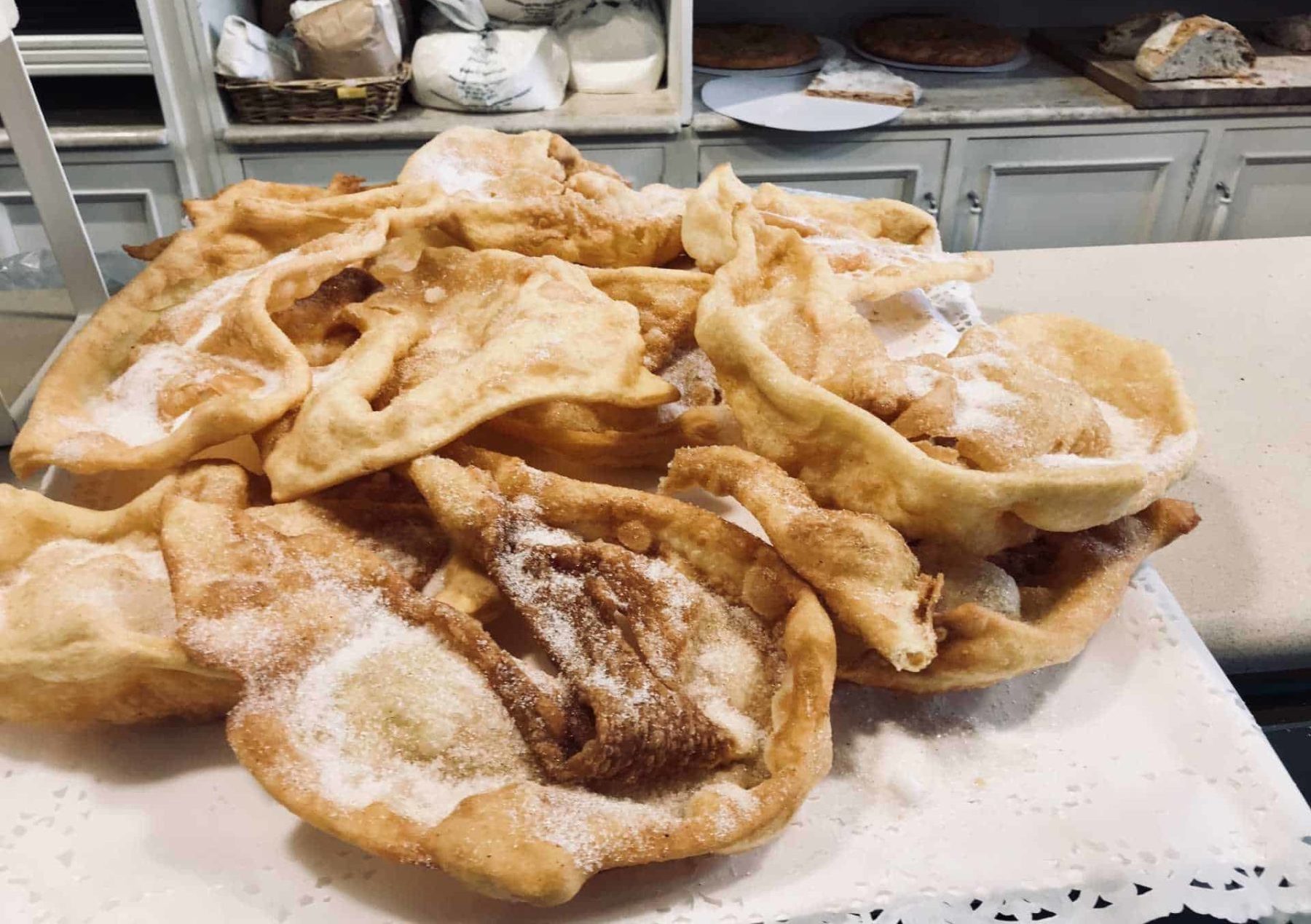Carnaval
Carnaval, or Entroido, here in Santiago de Compostela takes place every year in February. The town has its own local parade with participants dressed in colourful masks and fun costumes; and although we thoroughly enjoy the last satiric parade of the festivities with the burning of the “Meco” doll, we really enjoy the delicious specialty foods that are part of the celebrations!
Similar to many Spanish dishes, the pig is the highlight of the Carnaval foods. Typically, the locals enjoy the Galician Caldo, a hot pork based soup which is often enjoyed during the winter months; as well as Orejas, actual cooked pig ears, Lacón, boiled ham with greens and the well know cured pork, Chorizo.
Orejas
However, one of our favourite foods from the Carnaval is another dish called Orejas, or pig ears. This version is a sweet desert similar to a funnel cake.
Orejas are a long standing tradition for the Galician Carnaval and you see the local bakers preparing the sweet cake a few weeks before the start of the holiday. This famous desert was given the name as it resembles the ears of people, although its size is usually much, much bigger. Historically, the Gallegos used pork fat to fry the batter, although most use oil these days.
We are sharing an easy recipe for Spanish Orejas for you to prepare at home. Pair them with a sweet red wine or a desert liquor as the locals do here during Carnaval. Enjoy!
Recipe
Ingredients
- 2 eggs
- 50 ml of anise
- 500 grams flour
- 100 grams butter
- 120 grams powder sugar
- pinch of salt
- zest of one lemon
- 100 ml of water
- olive oil for frying
Method
In a large bowl mix the warm water, pinch of salt, melted butter, grated lemon, sugar, anise and eggs.
Beat until smooth without lumps. Add the flour little by little mixing first with a mixer and then with your hands. Knead until you have a thick dough. Let the dough sit for an hour.
Shaping the ears
Take two-centimeter portions of the dough, about the size of a walnut. Knead and stretch on the counter top with a rolling pin. It might be helpful to use some olive oil on the rolling pin so that it is easier to stretch, but do not not use flour if it sticks.
Roll out the ears to be super thin, like paper. You should make about 20 ears of approximately 18 cm x 12 cm. With your fingers, make a fold on one side giving the look of an ear.
Frying the ears
Heat the olive oil in a frying pan over medium-low heat, making sure it is not too hot.
Fry the ears on both sides until golden brown. Put to the side on a paper towel to absorb excess fat. Sprinkle with powdered sugar to taste.
Let cool and enjoy!
Rechupete, E. R. (2018, January 28). Orejas de Carnaval. Orellas de Entroido, receta paso a paso. Retrieved February 07, 2018, from https://www.recetasderechupete.






